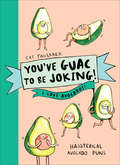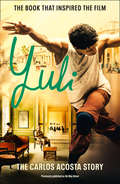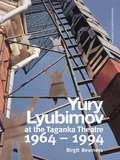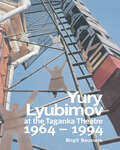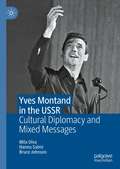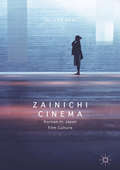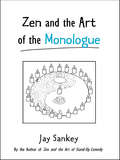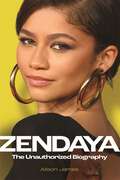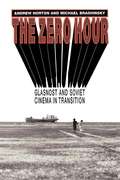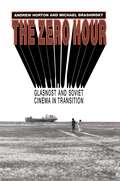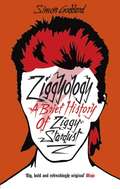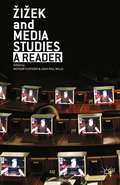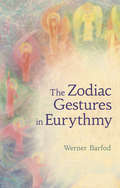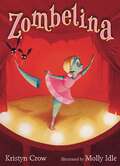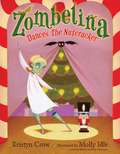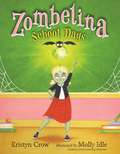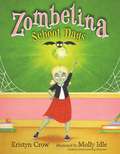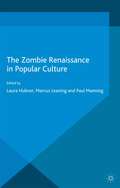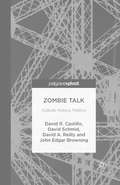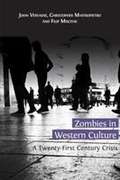- Table View
- List View
You’ve Guac to be Joking! I love Avocados: I Love Avocados!
by Cat FaulknerAvocadabra! Guaca-mole, Kiss My Hass! Let’s Avocuddle, Hugh Guacman …?! Pit-iful puns and avocado smash-ups with cute illustrations that celebrate our global avo-obsession. Bravocado!
Yuli: A Cuban Dancerâs Story
by Carlos AcostaNOW AN AWARD-WINNING FEATURE FILM STARRING CARLOS ACOSTA
Yuri Lyubimov: Thirty Years at the Taganka Theatre
by B. BeumersA study of Yury Lyubimov's tempestuous career and his style of theatre during his thirty years at the Taganka Theatre. This work traces the development of his ideas, from his arrival at the theatre in 1964 through to his explusion in 1984, and his period of exile in the West until his return in 1989 to a much-changed Russia. Tracing Lyubimov's work play by play, the book uncovers an individual doomed to be at odds with the prevailing political and social climate of his literary contemporaries.
Yuri Lyubimov: Thirty Years at the Taganka Theatre
by B. BeumersA study of Yury Lyubimov's tempestuous career and his style of theatre during his thirty years at the Taganka Theatre. This work traces the development of his ideas, from his arrival at the theatre in 1964 through to his explusion in 1984, and his period of exile in the West until his return in 1989 to a much-changed Russia. Tracing Lyubimov's work play by play, the book uncovers an individual doomed to be at odds with the prevailing political and social climate of his literary contemporaries.
Yves Montand in the USSR: Cultural Diplomacy and Mixed Messages
by Mila Oiva Hannu Salmi Bruce JohnsonThis volume is the first book-length account of Yves Montand’s controversial tour of the Soviet Union at the turn of the years 1956/57. It traces the mixed messages of this internationally visible act of cultural diplomacy in the middle of the turbulent Cold War. It also provides an account of the celebrated French singer-actor’s controversial career, his dedication to music and to peace activism, as well as his widespread fandom in the USSR. The book describes the political background for the events of the year 1956, including the changing Soviet atmosphere after Stalin’s death, portrays the rising transnational stardom of Montand in the 1940s and 1950s, and explores the controversies aroused by his plan to visit Moscow after the Hungarian Uprising. The book pays particular attention to Montand’s reception in the USSR and his concert performances, drawing on unique archival material and oral history interviews, and analyses the documentary Yves Montand Sings (1957) released immediately after his visit.
Zainichi Cinema: Korean-in-Japan Film Culture
by Oliver DewThis book examines how filmmakers, curators, and critics created a category of transnational, Korean-in-Japan (Zainichi) Cinema, focussing on the period from the 1960s onwards. An enormously diverse swathe of films have been claimed for this cinema of the Korean diaspora, ranging across major studio yakuza films and melodramas, news reels created by ethnic associations, first-person video essays, and unlikely hits that crossed over from the indie distribution circuit to have a wide impact across the media landscape. Today, Zainichi-themed works have never had a higher profile, with new works by Matsue Tetsuaki, Sai Yoichi, and Yang Yonghi frequently shown at international festivals. Zainichi Cinema argues that central to this transnational cinema is the tension between films with an authorized claim to “represent”, and ambiguous and borderline works that require an active spectator to claim them as images of the Korean diaspora.
Zen and the Art of the Monologue
by Jay SankeyJay Sankey--stand-up comic, magician, and cartoonist--is back with another book for performers. Building on the success of his Zen and the Art of Stand-up Comedy, Jay is moving further into the uncharted wilds of solo performance.
Zen and the Art of the Monologue
by Jay SankeyJay Sankey--stand-up comic, magician, and cartoonist--is back with another book for performers. Building on the success of his Zen and the Art of Stand-up Comedy, Jay is moving further into the uncharted wilds of solo performance.
Zendaya: The Unauthorized Biography
by Alison JamesDiscover how Zendaya conquered the worlds of film, TV and fashion to become the face of a generation. This is her life story, as never told before. Zendaya is a phenomenon. Beginning as a precocious child star on the Disney Channel, she has since graduated to adult roles in some of the biggest movies of the last five years, including The Greatest Showman, Dune and Marvel’s Spider-Man trilogy. In television, she is the star of Euphoria, which has become the second most-watched HBO show of all time after Game of Thrones – in large part thanks to her presence. Today she is, according to some industry analysts, "the most popular actor in the world".In this riveting and in-depth biography from the publishers of Harry, Adele and Billie Eilish, journalist and author Alison James explores every aspect of Zendaya’s life and career to date. Featuring a stunning, full-colour photographic plate section and spanning everything from her early forays into music, to her sensational ascent in the fashion world and her high-profile personal life – including her relationship with Spider-Man co-star Tom Holland – this is the most complete portrait yet of one of the world’s hottest stars.
The Zero Hour: Glasnost and Soviet Cinema in Transition
by Andrew Horton Michael BrashinskyNow faced with the "zero hour" created by a new freedom of expression and the dramatic breakup of the Soviet Union, Soviet cinema has recently become one of the most interesting in the world, aesthetically as well as politically. How have Soviet filmmakers responded to the challenges of glasnost? To answer this question, the American film scholar Andrew Horton and the Soviet critic Michael Brashinsky offer the first book-length study of the rapid changes in Soviet cinema that have been taking place since 1985. What emerges from their collaborative dialogue is not only a valuable work of film criticism but also a fascinating study of contemporary Soviet culture in general. Horton and Brashinsky examine a wide variety of films from BOMZH (initials standing for homeless drifter) through Taxi Blues and the glasnost blockbuster Little Vera to the Latvian documentary Is It Easy to Be Young? and the "new wave" productions of the "Wild Kazakh boys." The authors argue that the medium that once served the Party became a major catalyst for the deconstruction of socialism, especially through documentary filmmaking. Special attention is paid to how filmmakers from 1985 through 1990 represent the newly "discovered" past of the pre-glasnost era and how they depict troubled youth and conflicts over the role of women in society. The book also emphasizes the evolving uses of comedy and satire and the incorporation of "genre film" techniques into a new popular cinema. An intriguing discussion of films of Georgia, Estonia, Latvia, Lithuania, and Kazakhstan ends the work.
The Zero Hour: Glasnost and Soviet Cinema in Transition
by Andrew Horton Michael BrashinskyNow faced with the "zero hour" created by a new freedom of expression and the dramatic breakup of the Soviet Union, Soviet cinema has recently become one of the most interesting in the world, aesthetically as well as politically. How have Soviet filmmakers responded to the challenges of glasnost? To answer this question, the American film scholar Andrew Horton and the Soviet critic Michael Brashinsky offer the first book-length study of the rapid changes in Soviet cinema that have been taking place since 1985. What emerges from their collaborative dialogue is not only a valuable work of film criticism but also a fascinating study of contemporary Soviet culture in general. Horton and Brashinsky examine a wide variety of films from BOMZH (initials standing for homeless drifter) through Taxi Blues and the glasnost blockbuster Little Vera to the Latvian documentary Is It Easy to Be Young? and the "new wave" productions of the "Wild Kazakh boys." The authors argue that the medium that once served the Party became a major catalyst for the deconstruction of socialism, especially through documentary filmmaking. Special attention is paid to how filmmakers from 1985 through 1990 represent the newly "discovered" past of the pre-glasnost era and how they depict troubled youth and conflicts over the role of women in society. The book also emphasizes the evolving uses of comedy and satire and the incorporation of "genre film" techniques into a new popular cinema. An intriguing discussion of films of Georgia, Estonia, Latvia, Lithuania, and Kazakhstan ends the work.
The Zero Hour: Glasnost and Soviet Cinema in Transition
by Andrew Horton Michael BrashinskyNow faced with the "zero hour" created by a new freedom of expression and the dramatic breakup of the Soviet Union, Soviet cinema has recently become one of the most interesting in the world, aesthetically as well as politically. How have Soviet filmmakers responded to the challenges of glasnost? To answer this question, the American film scholar Andrew Horton and the Soviet critic Michael Brashinsky offer the first book-length study of the rapid changes in Soviet cinema that have been taking place since 1985. What emerges from their collaborative dialogue is not only a valuable work of film criticism but also a fascinating study of contemporary Soviet culture in general. Horton and Brashinsky examine a wide variety of films from BOMZH (initials standing for homeless drifter) through Taxi Blues and the glasnost blockbuster Little Vera to the Latvian documentary Is It Easy to Be Young? and the "new wave" productions of the "Wild Kazakh boys." The authors argue that the medium that once served the Party became a major catalyst for the deconstruction of socialism, especially through documentary filmmaking. Special attention is paid to how filmmakers from 1985 through 1990 represent the newly "discovered" past of the pre-glasnost era and how they depict troubled youth and conflicts over the role of women in society. The book also emphasizes the evolving uses of comedy and satire and the incorporation of "genre film" techniques into a new popular cinema. An intriguing discussion of films of Georgia, Estonia, Latvia, Lithuania, and Kazakhstan ends the work.
Ziggyology: A Brief History Of Ziggy Stardust
by Simon GoddardHe came from Outer Space...It was the greatest invention in the history of pop music – the rock god who came from the stars – which struck a young David Bowie like a lightning bolt from the heavens. When Ziggy the glam alien messiah fell to Earth, he transformed Bowie from a prodigy to a superstar who changed the face of music forever. But who was Ziggy Stardust? And where did he really come from?In a work of supreme pop archaeology, Simon Goddard unearths every influence that brought Ziggy to life – from HG Wells to Holst, Kabuki to Kubrick, and Elvis to Iggy. Ziggyology documents the epic drama of the Starman’s short but eventful time on Planet Earth… and why Bowie eventually had to kill him.
Zizek and Media Studies: A Reader
by Matthew Flisfeder Louis-Paul WillisFilm, media, and cultural theorists have long appealed to Lacanian theory in order to discern processes of subjectivization, representation, and ideological interpellation. Here, the contributors take up a Zizekian approach to studies of cinema and media, raising questions about power, ideology, sexual difference, and enjoyment.
The Zodiac Gestures in Eurythmy
by Werner BarfodEurythmy is an art form that makes sounds visible. By incorporating zodiac gestures into their art, as indicated by Rudolf Steiner, eurythmists can draw on a deep connection between the earth and the cosmos. The zodiac, as representative of the whole cosmos, is a vital part of human spirituality, acting as the backdrop to human life. But it can be hard to fathom the zodiac's secrets, even through meditation. Barfod draws a parallel between meditative exercises and eurythmy practice, and shows how zodiac gestures in eurythmy can reveal cosmic insights. This is a book for eurythmy teachers and practitioners who want to deepen their art and spiritual work.
Zombelina
by Kristyn Crow Molly IdleZombelina loves to dance. She moonwalks with mummies and boogies with bats. She spins like a specter and glides like a ghost and loves to dance for her family the most. When Zombelina enrolls in a ballet class for real girls, her dancing gives everyone the chills! But when her first recital brings on a case of stage fright, her zombie moans and ghoulish groans scare her audience away. Only her devoted family's cheers, in their special spooky way, help Zombelina dance the ballet debut of her dreams. Introducing the most adorable zombie to ever grace the dance floor, Kristyn Crow's pitch-perfect rhyme and Molly Idle's charmingly spook-tacular illustrations will make every reader want to sway and sashay in their own zombie trance.
Zombelina: School Days
by Kristyn Crow Molly IdleZombelina loves to dance. She moonwalks with mummies and boogies with bats. She spins like a specter and glides like a ghost and loves to dance for her family the most. When Zombelina enrolls in a ballet class for real girls, her dancing gives everyone the chills! But when her first recital brings on a case of stage fright, her zombie moans and ghoulish groans scare her audience away. Only her devoted family's cheers, in their special spooky way, help Zombelina dance the ballet debut of her dreams. Introducing the most adorable zombie to ever grace the dance floor, Kristyn Crow's pitch-perfect rhyme and Molly Idle's charmingly spook-tacular illustrations will make every reader want to sway and sashay in their own zombie trance.
Zombelina Dances The Nutcracker
by Kristyn Crow Molly IdleIn another rhyming read-aloud tale full of delightful macabre humor Zombelina once again steals the show! This time Zombelina and her friend Lizzie are dancing in The Nutcracker. On the night of the big show, Zombelina is ready, but Grandpa Phantom has other plans for the opera house. Zombelina will need to think fast to save the show, and she'll need Lizzie's help. When best friends work together, the show will go on! Young dancers and readers will love this family-filled, friendship-inspired picture book that brings Zombelina home for the holidays in another scary-good story!
Zombelina Dances The Nutcracker
by Kristyn Crow Molly IdleIn another rhyming read-aloud tale full of delightful macabre humor Zombelina once again steals the show! This time Zombelina and her friend Lizzie are dancing in The Nutcracker. On the night of the big show, Zombelina is ready, but Grandpa Phantom has other plans for the opera house. Zombelina will need to think fast to save the show, and she'll need Lizzie's help. When best friends work together, the show will go on! Young dancers and readers will love this family-filled, friendship-inspired picture book that brings Zombelina home for the holidays in another scary-good story!
Zombelina School Days
by Kristyn Crow Molly IdleZombelina loves to dance, and going to school is just as fun! She leaps on the bus and twirls down the aisle. In class she raises her hand high in the air, even if sometimes it falls under her chair.When it's time for show-and-tell, Zombelina can't wait to share her hip-hop moves, but a new student named Morty has his own case of stage fright . . . something Zombelina knows how to fix. She has the perfect idea to make Morty feel welcome: a big rockin' dance party! After all, friends who dance together, stay together!
Zombelina School Days: School Days
by Kristyn Crow Molly IdleZombelina loves to dance, and going to school is just as fun! She leaps on the bus and twirls down the aisle. In class she raises her hand high in the air, even if sometimes it falls under her chair.When it's time for show-and-tell, Zombelina can't wait to share her hip-hop moves, but a new student named Morty has his own case of stage fright . . . something Zombelina knows how to fix. She has the perfect idea to make Morty feel welcome: a big rockin' dance party! After all, friends who dance together, stay together!
The Zombie Renaissance in Popular Culture
by Paul Manning Laura Hubner Marcus LeaningThis collection addresses the significant cultural phenomenon of the 'zombie renaissance' – the growing importance of zombie texts and zombie cultural practices in popular culture. The chapters examine zombie culture across a range of media and practices including films games, music, social media, literature and fandom.
Zombie Talk: Culture, History, Politics
by John Edgar Browning David Schmid David Castillo David A. ReillyZombie Talk offers a concise, interdisciplinary introduction and deep analytical set of theoretical approaches to help readers understand the phenomenon of zombies in contemporary and modern culture. With essays that combine Humanities and Social Science methodologies, the authors examine the zombie through an array of cultural products from different periods and geographical locations: films ranging from White Zombie (1932) to the pioneering films of George Romero, television shows like AMC's The Walking Dead, to literary offerings such as Richard Matheson's I am Legend (1954) and Seth Grahame-Smith's Pride, Prejudice and Zombies (2009), among others.
Zombies in Western Culture: A Twenty-First Century Crisis
by John Vervaeke Filip Miscevic Christopher MastropietroWhy has the zombie become such a pervasive figure in twenty-first-century popular culture? John Vervaeke, Christopher Mastropietro and Filip Miscevic seek to answer this question by arguing that particular aspects of the zombie, common to a variety of media forms, reflect a crisis in modern Western culture. The authors examine the essential features of the zombie, including mindlessness, ugliness and homelessness, and argue that these reflect the outlook of the contemporary West and its attendant zeitgeists of anxiety, alienation, disconnection and disenfranchisement. They trace the relationship between zombies and the theme of secular apocalypse, demonstrating that the zombie draws its power from being a perversion of the Christian mythos of death and resurrection. Symbolic of a lost Christian worldview, the zombie represents a world that can no longer explain itself, nor provide us with instructions for how to live within it. The concept of 'domicide' or the destruction of home is developed to describe the modern crisis of meaning that the zombie both represents and reflects. This is illustrated using case studies including the relocation of the Anishinaabe of the Grassy Narrows First Nation, and the upheaval of population displacement in the Hellenistic period. Finally, the authors invoke and reformulate symbols of the four horseman of the apocalypse as rhetorical analogues to frame those aspects of contemporary collapse that elucidate the horror of the zombie. Zombies in Western Culture: A Twenty-First Century Crisis is required reading for anyone interested in the phenomenon of zombies in contemporary culture. It will also be of interest to an interdisciplinary audience including students and scholars of culture studies, semiotics, philosophy, religious studies, eschatology, anthropology, Jungian studies, and sociology.
Zombies in Western Culture: A Twenty-First Century Crisis (PDF)
by John Vervaeke Christopher Mastropietro Filip MiscevicWhy has the zombie become such a pervasive figure in twenty-first-century popular culture? John Vervaeke, Christopher Mastropietro and Filip Miscevic seek to answer this question by arguing that particular aspects of the zombie, common to a variety of media forms, reflect a crisis in modern Western culture. The authors examine the essential features of the zombie, including mindlessness, ugliness and homelessness, and argue that these reflect the outlook of the contemporary West and its attendant zeitgeists of anxiety, alienation, disconnection and disenfranchisement. They trace the relationship between zombies and the theme of secular apocalypse, demonstrating that the zombie draws its power from being a perversion of the Christian mythos of death and resurrection. Symbolic of a lost Christian worldview, the zombie represents a world that can no longer explain itself, nor provide us with instructions for how to live within it. The concept of 'domicide' or the destruction of home is developed to describe the modern crisis of meaning that the zombie both represents and reflects. This is illustrated using case studies including the relocation of the Anishinaabe of the Grassy Narrows First Nation, and the upheaval of population displacement in the Hellenistic period. Finally, the authors invoke and reformulate symbols of the four horseman of the apocalypse as rhetorical analogues to frame those aspects of contemporary collapse that elucidate the horror of the zombie. Zombies in Western Culture: A Twenty-First Century Crisis is required reading for anyone interested in the phenomenon of zombies in contemporary culture. It will also be of interest to an interdisciplinary audience including students and scholars of culture studies, semiotics, philosophy, religious studies, eschatology, anthropology, Jungian studies, and sociology.
